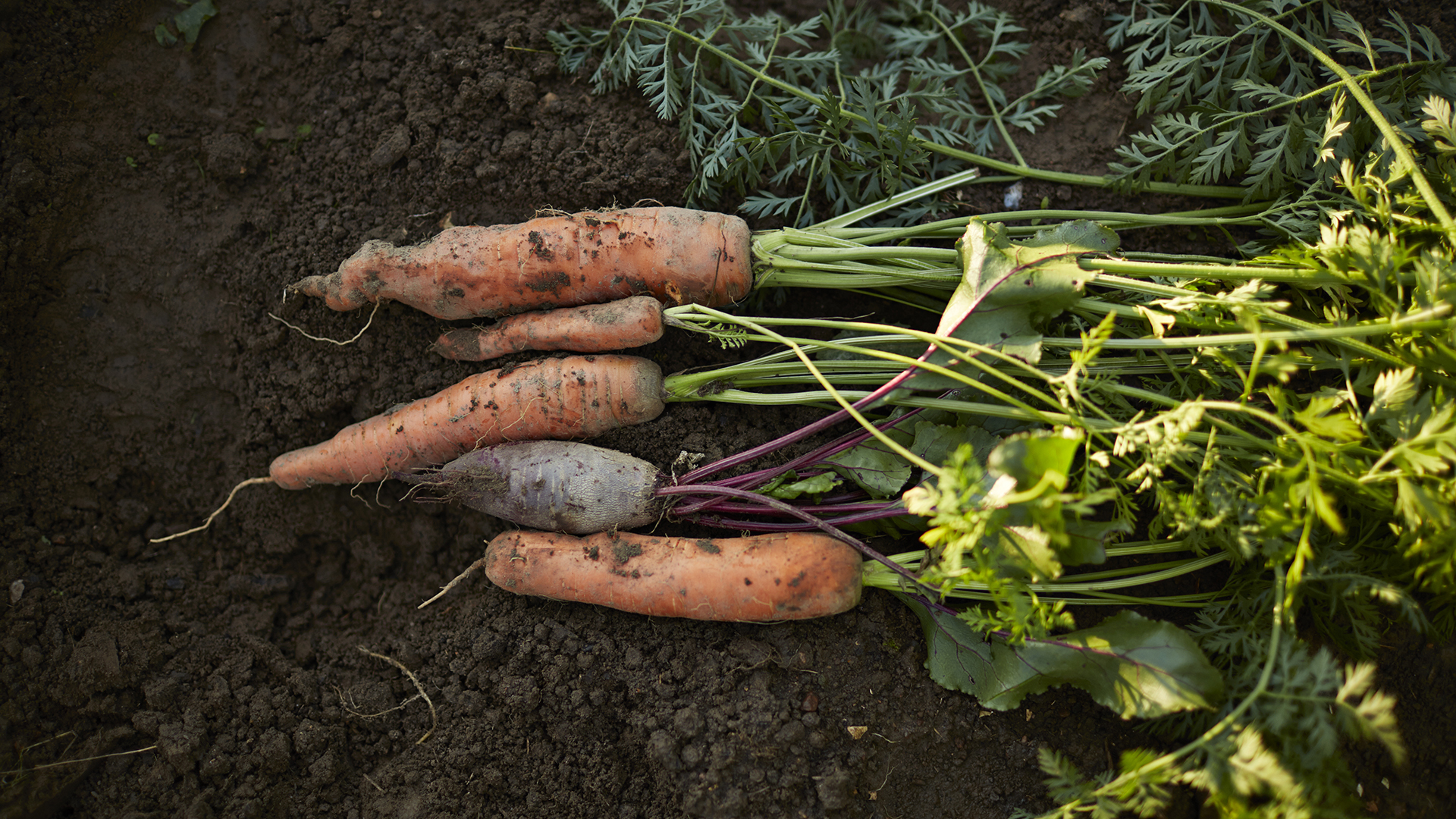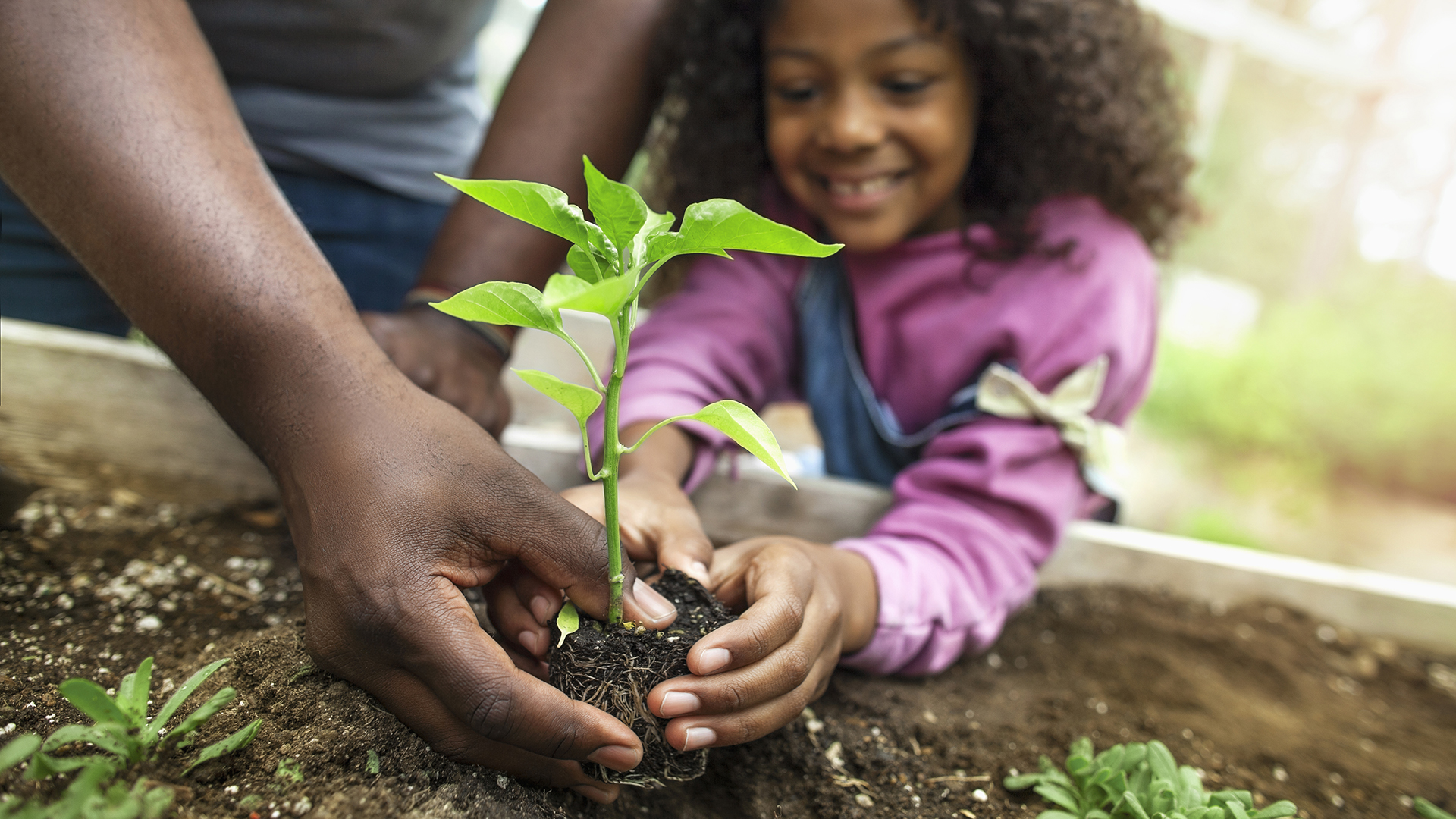How to till a garden
Keen to learn how to till a garden and prepare your veg plot for the new season? We've got everything you need to know here

If you dream of a fertile vegetable garden, bursting with colorful produce, knowing how to till a garden in readiness for sowing and planting is essential. Time spent preparing will pay dividends later. What’s more, a space packed with delicious vegetables is good for the soul and body, bringing mood-boosting satisfaction as well as essential vitamins and minerals.
Knowing about your soil’s composition is important, too. We’ve asked the experts how to discover whether you garden on clay, sand or loam. This will make tilling your soil more effective and, in time, your garden more productive.
While some good old-fashioned hard work is unavoidable, knowing how to till a garden well also means making use of labor-saving tools such as our choice of the best tillers. They make light work of larger areas, previously uncultivated sites, stony ground and trickier clay soils, saving you time and muscle power.
How to till a garden
It may not sound glamorous, but that dark, crumbly topsoil is the source of all garden life, from the tiniest weed to a tangled teepee of green beans or a vibrant patch of golden marigolds. Without it, vegetable harvests and flower arrangements simply wouldn’t exist. We asked Jenny Huckstep of Cultivate Design for her expert advice on soil, aka rocket fuel for plants.
First up, find out if your soil is clay, sand or loam. “Take a handful and press it into a ball,” says Jenny. “If you can roll easily into a long, sticky worm shape, then you’ve got clay. This drains poorly but it’s full of nutrients, so don’t worry.” At the opposite end of the spectrum, free-draining sandy soil will feel gritty when wet and won’t hold together well. “Most of us garden on soil that’s somewhere in between clay and sand,” says Jenny. “This loamy soil is more forgiving.”

“The majority of fruit and veg are annuals,” says Jenny, “so they grow, harvest and die in just one season, making them hungry plants.” They need good supplies of sunshine, water and nutrients. The last two are likely to be your responsibility. Plants need air, too, which is why you should dig over compacted earth. Do this in autumn, ideally, and you can leave the clods to the weathering effects of winter, when they will be gradually broken down naturally. Do it in spring and you’ll need to break down any clods yourself using a garden fork and rake. “Never dig or rotavate your soil when it’s frozen or parched or you’ll do more harm than good,” advises Jenny.
Anything that competes for nutrients will mean less healthy plants. So, next deal with undergrowth and weeds. “Take extra care with perennials that have thick taproots, such as dandelions and alkanet, as these can sprout from small sections of root left in the soil.”
Sign up to receive the latest news, reviews, buying guides and deals direct to your inbox
Stony soil will also affect the productivity of your soil, so remove them as you dig. “If they’re smaller than a cherry tomato, they can stay,” says Jenny. However, if you want to grow carrots, be a little more thorough, as even small stones will slow growth and produce wonky roots.
Jenny Huckstep says, “It may seem daunting, but growing fruit and veg is quite simple. Don’t worry if your garden isn’t huge; it’s possible to fit in a few favorites even in a small space. If you’re new to gardening, focus on easy options like tomatoes, green beans or zucchini. Take time to prepare the soil, make regular checks to keep them weed-free and watered, and you can have a steady supply throughout summer."
How to condition sandy soil
Free-draining sandy soil leaches nutrients quickly. To combat this, Jenny champions organic matter, ideally in the form of well-rotted horse manure or garden compost. She’s keen to point out that manure is well rotted when it smells earthy, and no longer gives off heat. This improves both fertility and water retention. “Dig in plenty,” she says: “The recommended minimum on sandy soil is a barrowload for every 4 sq metres.” Do this in early spring, or add it as a mulch on the surface of well-dug and weeded soil in winter. It will gradually become incorporated by earthworms.
How to improve clay
The heavier your soil, the more you’ll benefit from a specialist rotavator or tiller. Of course, if you have a large area you want to turn over to fruit and veg production, a rotavator is your best friend. The same goes for soil that’s never been cultivated before. “Converting an area of lawn into a vegetable bed is hard work,” says Jenny. “Using the best tools for the job makes life so much easier.”
To boost clay, again the secret is well-rotted horse manure or garden compost, but you could also dig in leaf mould. A barrowload every 4 sq metres makes all the difference to the friability of clay, improving drainage and aeration, and making nutrients more available.
Reviews
Whirlpool 24" Stainless Steel AI Dishwasher Review
Napoleon TravelQ PRO285 Portable Gas Grill review
Dreame L40 Ultra Robot Vacuum Cleaner and Mop review: almost hands-free cleaning
GE Profile Smart Mixer with Auto Sense review: a powerful, thorough mixer
Echo eForce DPB-2500 review: a leaf blower as a snow removal tool?
DPAS-2100 + Pro Paddle Attachment review: a new way to remove snow this winter?
Midea MAD53109APK 5.5QT Air Fryer review: a small, simple, and highly effective option
Eureka J15 Pro Ultra Robot Vacuum review: hands-free cleaning for busy families
Ready to sow and plant?
It’s spring, the sun is shining, but how do you know when your soil’s primed? If it’s crumbly, dark and full of earthworms, that’s a great sign. If rain no longer pools on its caked surface or runs straight through, you’re good to go. If you can work it easily with a hand fork, then it’s ready. The rest is up to you and your plants.
Discover more guides for the garden…
Best pool heaters
Best swim spas
Best water heaters
Best patio heaters
Best hot tubs
Best gas lawn mowers
Francesca is a garden designer, writer and consultant based in southeast London, UK. Francesca is a member of the Garden Media Guild and has written for a handful of well- known UK titles, including Country Homes & Interiors and Ideal Home. When she’s not in her own garden, designing someone else’s garden or writing about gardens, you might find her supping a pint of craft ale at one of her local pubs.

